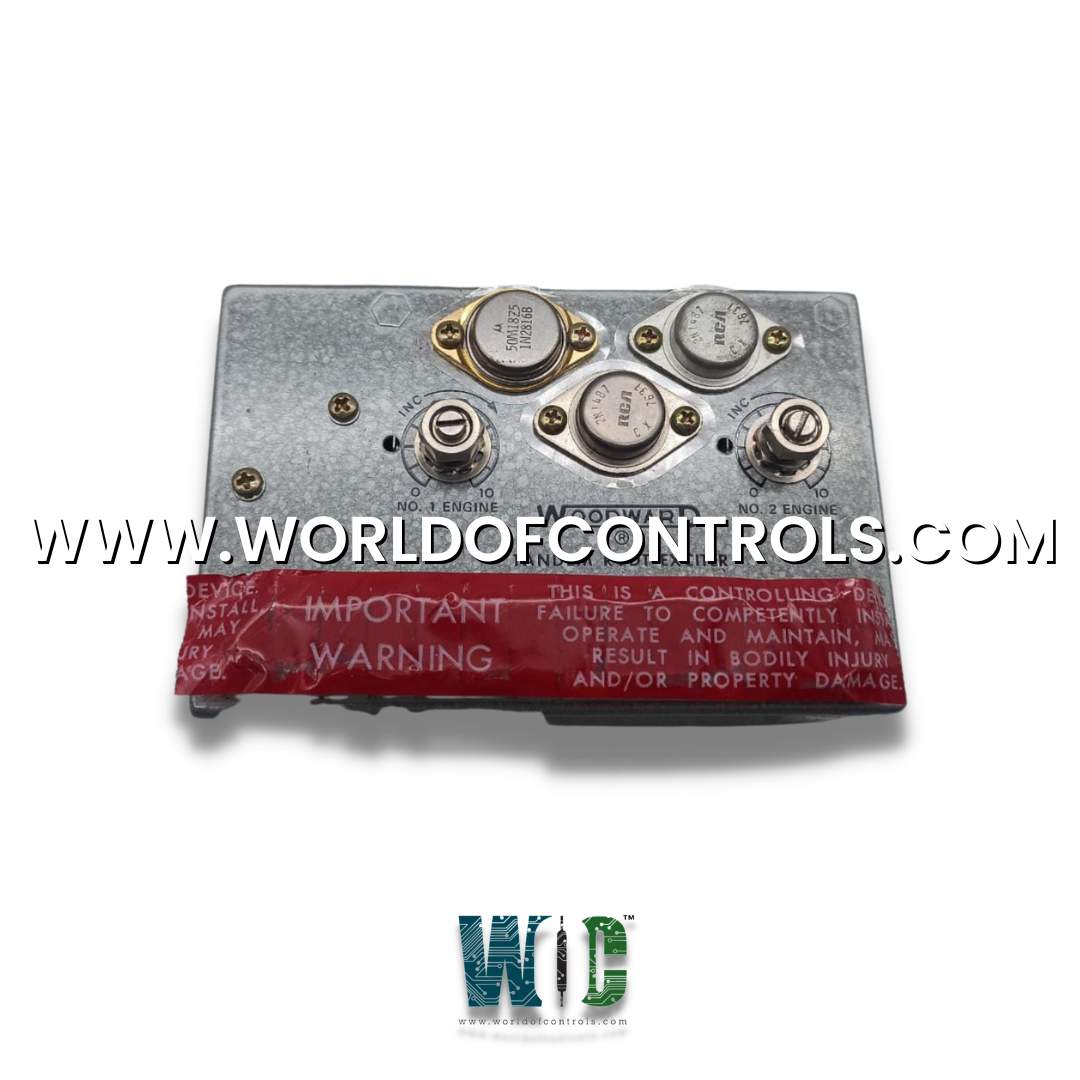
World Of Controls understands the criticality of your requirement and works towards reducing the lead time as much as possible.
8270-919 - Tandem RVDT Exciter Board is available in stock which ships the same day.
8270-919 - Tandem RVDT Exciter Board comes in UNUSED as well as REBUILT condition.
To avail our best deals for 8270-919 - Tandem RVDT Exciter Board, contact us and we will get back to you within 24 hours.
SPECIFICATIONS:
Part Number: 8270-919
Manufacturer: Woodward
Product type: Tandem RVDT Exciter Board
Software Support: Modbus RTU, Modbus ASCII
Input Voltage: 24 Vdc ±10%
Output Current: 10 A max
Size: 14in. x 11in. x 4in
Display: 24-character LEDs
Enclosure Type: NEMA 4X
Button: Emergency Stop
Availability: In Stock
Country of Manufacture: United States (USA)
FUNCTIONAL DESCRIPTION:
8270-919 is a Tandem RVDT Exciter Board manufactured and designed by Woodward as part of the 8200 Series used in Turbine Control Systems. A Rotary Variable Differential Transformer (RVDT) is an electromechanical device that produces a variable AC output voltage linearly correlated with the angular displacement of its input shaft. When supplied with a constant AC power source, the output signal exhibits linearity within a specified angular range.
KEY FEATURES:
BENEFITS:
TYPICAL APPLICATIONS:
The fundamental operation of an RVDT involves the rotation of an iron core within a stator assembly, which is supported by bearings. The stator is constructed from passivated stainless steel and comprises a primary excitation coil and two secondary output coils.
A fixed AC excitation current is applied to the primary stator coil, which is electromagnetically linked to the secondary coils. This linkage is proportionate to the angle of the input shaft. The output coil pair is arranged so that one coil is in-phase with the excitation coil, while the other is 180 degrees out-of-phase.
When the rotor aligns the magnetic flux evenly between the in-phase and out-of-phase coils, the output voltages cancel each other, resulting in a signal with zero value. This is known as the electrical zero position (E.Z.). When the rotor shifts from the E.Z., the output signals exhibit magnitudes and phase relationships proportional to the rotation direction.
Since RVDTs essentially function like transformers, variations in excitation voltage cause proportional changes in the output (transformation ratio). However, the ratio of output voltage to excitation voltage remains constant. Most RVDT signal conditioning systems measure the signal based on the transformation ratio (TR), making them relatively unaffected by excitation voltage drift beyond 7.5%. Hence, strict voltage regulation is typically unnecessary, but it's essential to control the excitation frequency within +/- 1% to maintain accuracy.
WOC has the largest stock of Woodward 8200 series Turbine Control System Replacement Parts. We can also repair your faulty boards. WORLD OF CONTROLS can also supply unused and rebuilt backed up with a warranty. Our team of experts is available round the clock to support your OEM needs. Our team of experts at WOC is happy to assist you with any of your automation requirements. For pricing and availability on any parts and repairs, kindly get in touch with our team by phone or email.
What is a Tandem RVDT Exciter Board?
A Tandem RVDT Exciter Board is an electronic component designed to provide the excitation voltage for a tandem configuration of Rotary Variable Differential Transformers (RVDTs). It is responsible for generating the alternating current (AC) voltage needed to energize the RVDTs and enable them to function as position sensors.
What is the purpose of a Tandem RVDT Exciter Board?
The primary purpose of the exciter board is to provide a stable and consistent AC excitation voltage to the RVDTs in a tandem setup. This excitation voltage allows the RVDTs to generate accurate and synchronized position signals.
What are the advantages of using a Tandem RVDT Exciter Board?
Using a dedicated exciter board ensures that the RVDTs receive a consistent and controlled excitation voltage, which is crucial for accurate and synchronized position sensing in tandem configurations. It helps maintain the reliability and precision of the RVDT system.